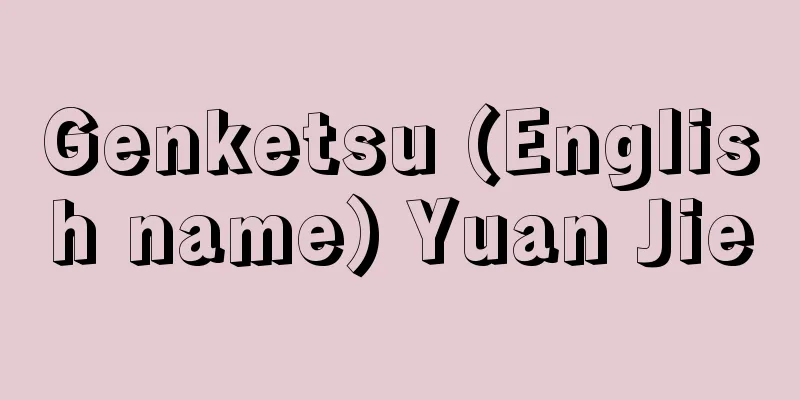Genketsu (English name) Yuan Jie

|
[Born] Kaigen 11 (723) [Died] 7th year of the Taireki era (772) A Chinese literary figure during the prosperous Tang Dynasty. Born in Wuchang (Wuhan, Hubei Province). According to one theory, he was from Lu County (Henan Province). His courtesy name was Jishan. His pen names were Qikanzi (Qikanzi) and Manlang. His birth year is said to be in Kaiyuan 7 (719). In Tianbao 13 (754), he passed the Jinshi examination. To escape the An Lushan Rebellion, he retreated to Qikan Cave in the Xisai Mountains in Hubei, but in Qianyuan 2 (759), he was summoned by Emperor Suzong and became the Right Jinwu Military Officer, where he distinguished himself in suppressing the rebel army. In Guangde 1 (763), he was promoted to governor of Daozhou (Hunan Province), and in Dali 3 (768), he was promoted to Rongguan Jinglueshi (Emissary of the Emperor), but the following year, he retired from his post after his mother's death. He was a noble man with a strong sense of patriotism, and his poetry focused on the contradictions in society, with many poems that sang about the suffering of people during times of war. His 12 poems in the "Kiyuefu" (Classical Music) were the precursor to Bai Juyi's "Xinyuefu." He also avoided flashy techniques in his writing, placing emphasis on content, and was a pioneer of Han Yu's classical literature movement. His collection of poems and prose, "Yuanzi Shanji." MotoyuiSource: Encyclopaedia Britannica Concise Encyclopedia About Encyclopaedia Britannica Concise Encyclopedia Information |
|
[生]開元11(723) [没]大暦7(772) 中国,盛唐の文学者。武昌 (湖北省武漢市) の人。一説に魯県 (河南省) の人という。字,次山。号,琦玕子 (きかんし) ,漫郎など。生年も一説には開元7 (719) 年。天宝 13 (754) 年進士に及第。安禄山の乱を避け,湖北の西塞山中の 琦玕洞にこもったが,乾元2 (759) 年粛宗に召され右金吾兵曹参軍となり,反乱軍の討伐に戦功をあげた。広徳1 (763) 年道州 (湖南省) 刺史,大暦3 (768) 年容管経略使に進んだが,翌年母の死にあって官をやめた。人格高潔で憂国の情に富み,詩は社会の矛盾に目を向け,戦乱のなかの人々の苦しみをうたった社会詩が多く,その『系楽府』 12首は白居易の『新楽府』のさきがけである。また文章でも派手な技巧を避け,内容を重んじた文で,韓愈の古文運動の先駆をなした。詩文集『元次山集』。 元結
|
Recommend
Michihiko
A haiku poet of the mid-Edo period. A member of th...
Thimble - Sashinuki
〘Noun〙① A type of hakama. A long, loose pair of ei...
Zazen (Zazen)
A Buddhist practice. It is the practice of Zen whi...
Control - Kokki
〘 noun 〙 To overcome oneself. To overcome one'...
Pseudoelasticity
...Because shape memory alloys have properties no...
Antiochus [I] - Antiochus
King of the Seleucid Empire of Syria (reigned 281-...
Kal-mun-wang (English spelling)
A title given to the highest-ranking nobles in Kor...
Awe - If
〘noun〙 To be afraid or trembling. Also, the feelin...
Kama Pass
A pass between Kama City and Toho Village in centr...
Fairbanks (English spelling)
A city located almost in the center of the state o...
Sotherby's
…In the 17th century, art dealers flourished in P...
Kawakami Soroku
Year of death: May 11, 1899 (Meiji 32) Year of bir...
Homer, Winslow
Born: February 24, 1836 in Boston Died: September ...
《Sorrowful Algae》 - Kanpisou
…He was praised for his literary talent and manne...
Kanasana Shrine
It is located in Ninomiya, Kamikawa-machi, Kodama...









